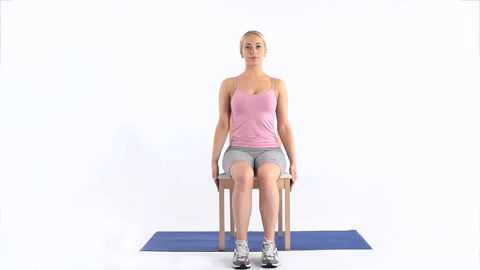
Do you experience chronic tensions in your neck? This practice may help you to better understand connections within your body and your postural alignment.
Begin by sitting on your favourite chair or in an easy yoga cross-legged position.
Sit comfortably, sit tall….
Let your shoulders rest on your thorax. Relax your eyes, face and jaw.
Now bring your attention to your chest, in the space behind your sternum. If you are familiar with the chakras system this is the location of your ‘heart chakra’.
Start to do small side bends by tilting your ‘heart chakra’ to the right then to the left. Repeat slowly.
Observe the sensations in your body.
Do you feel any muscular contraction in your neck? Perhaps a mild stiffness on one side?
You may notice that your neck doesn’t follow the sidebendings. This is perfectly normal and is called the ‘righting reflex’ which works for maintaining balance of the body.
In this exercise or in your yoga practice you would actually be more comfortable if your neck followed the side bending. But because of the righting reflexes you instinctively look ahead with your eyes roughly horizontal to the ground plane. Notice how your neck loses some of its flexibility as you attempt to keep your head on straight while sidebending.
If you are a yoga practitioner try to keep your neck long and aligned with your thoracic spine. Remember that all postures should be steady and comfortable, including in the neck.
In a less exaggerated, but no less important way, our necks are always adjusting to imbalances everywhere in our bodies. Since none of us have perfectly balanced bodies, to some extent we have all lost some degree of mobility and adaptability in the neck.
Ida Rolf, the creator of Rolfing Structural Integration said; ‘Where you think it is, it aint’. She meant that tensions and restrictions are often caused by imbalances located away from where they are felt.
For more information on the righting reflex click here.
